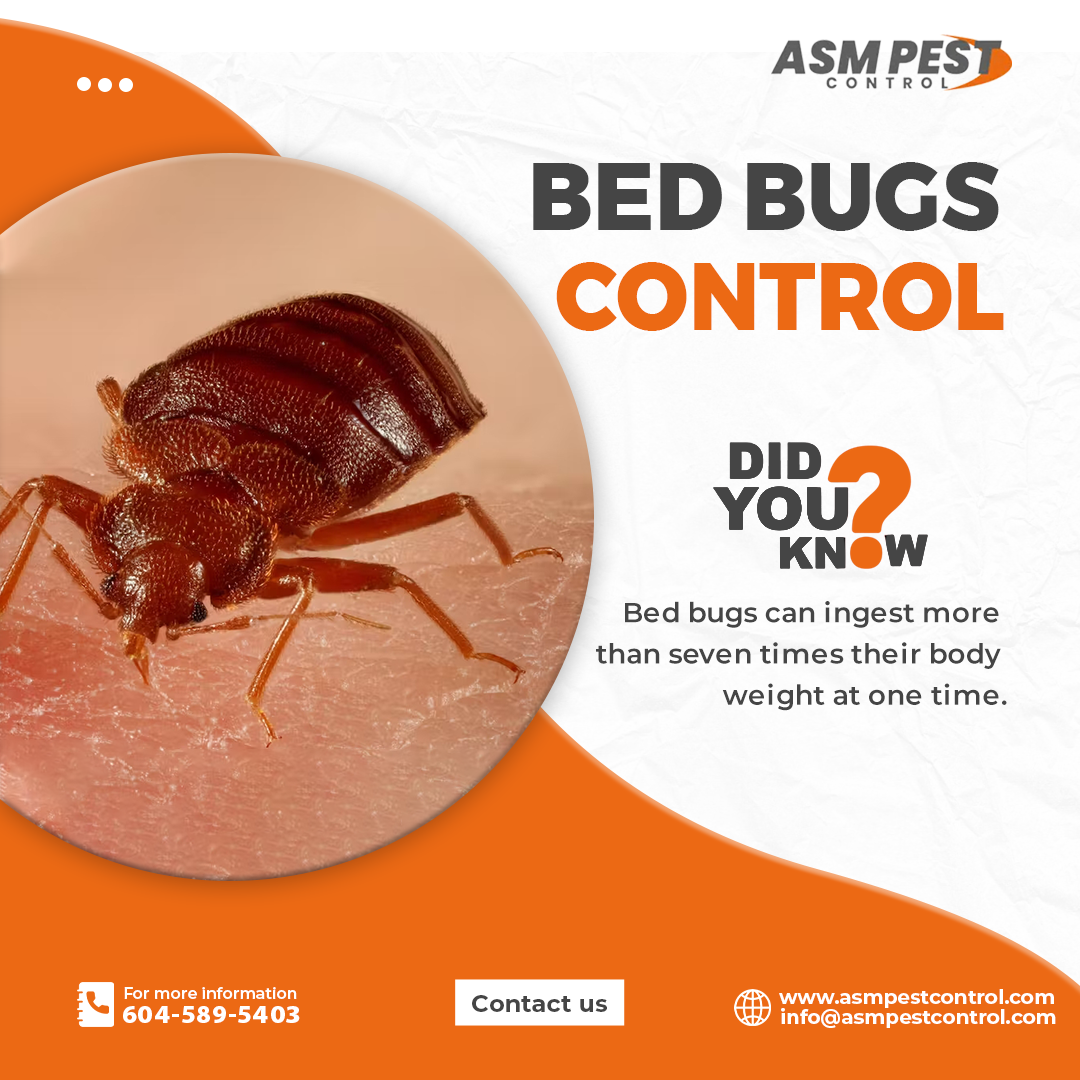Bed bugs do not spread disease; the itching and agony caused by their bites are actual. Workers who go door-to-door or work in homes where bed bugs are present run the danger of getting bit or transmitting the pests to other areas. We review the fundamentals of bed bugs in this guide, including bed bug control Vancouver and their fun facts & hidden secrets you need to learn about.
Fun Facts about bed bugs you don’t know about
Adult bed bugs are minor (4-5 mm long) yet easily noticeable due to their dark brown hue and flat, broad, oval form. A “true bug,” a bed bug has six legs, three body segments, and a four-part antenna. Furthermore, they are actual nuisances. Bed bugs are most active at night. They will come out during the day to find food if they have to. Their peak activity period is from midnight until five in the morning. The feeding time of a bed bug is approximately five minutes. People are rapid to consume.
A bed bug can consume seven times its weight in food in one sitting. An adult weighing 150 pounds must drink 473 liters of water in a single sitting. A female bed bug can lay anywhere from one hundred to one hundred and fifty eggs during her lifetime. Bed bugs feed on human blood. They first appeared when cave dwellers lived near bats. Around 245,000 years ago, bed bugs started feeding on people instead of bats.
Hidden secret about the behavior of bed bugs
Bed bugs usually feed on blood from their human hosts every three to seven days. During the day, they stay hidden and are most active at night. But they might eat during the day when infestations are wrong, or they’ve been starving for a while. They go back to their hiding spots right after eating. Upholstered furniture, such as mattresses, couches, and recliners, is a typical habitat for bed bugs. They often lurk in the crevices of mattresses, box springs, headboards, footboards, and sheets.
The most common areas that bed bugs bite are exposed skin, such as the hands, arms, and neck. Some people experience no symptoms, while others may have discomfort, itching, and raised welts where the bites were. Some people are susceptible and can experience systemic reactions throughout their bodies. The problem is that bite symptoms aren’t always a reliable indicator of bed bug presence, as not everyone has an allergic reaction to them. Bed bugs can travel from one flat to another in a multi-unit building via shared spaces. The transmission of bed bugs from one building to another can happen over great distances when guests transport diseased objects or furniture from one site to another.
Where do bed bugs live?
Bed bugs are open about where their hosts sleep or relax. The client’s bed and frequently used upholstered furniture should be inspected first. Thus, the corners of the bed’s linens, pillows, blankets, skirts, and mattress covers are familiar places to find them. It can also include the mattress and box spring’s piping, seams, tags, and any headboard or bed frame holes. In a severely infested room, bed bugs can be located on walls, other objects, and even farther away from the furniture. Clothes, wheelchairs, and books and albums on or near the bed or sofa can all be infested with bed bugs.
Intense mating habits: Bed bugs can multiply at what rate?
The reproductive procedure of bed bugs is traumatic insemination, which sounds terrifying. The male injects the female with her own fertilized egg after violently penetrating her abdomen. Ever since then, she has never needed to mate because she is perpetually pregnant. After that, the female will begin to lay an egg or two every day, on average. Throughout her approximately one-year lifespan, she will deposit 200–300 eggs. They also hatch pretty rapidly. The young bed bugs will be ready to hatch in only ten days. Well, they reach maturity quickly. And then the process repeats. Irrigation occurs at a rapid pace because of this.
Cannot transfer diseases between human beings or animals
Research has shown that bed bugs cannot transmit diseases from one species to another, which is good news for anyone who has ever been bitten by one. Because ticks, another bed bug, may transmit disease, many worry that these insects can do the same. Because of their unique anatomy, bed bugs cannot transmit diseases to humans. Generally speaking, they are merely unpleasant and disgusting. Their biting will become intolerable as they increase, and their progeny will do the same. There is no need to worry about contracting contagious diseases from bed bugs. Nevertheless, you may get a skin infection from scratching too much.
Excellent adaptability and built-in aesthetics
People often blame hotels or other public places when they discover bed bugs in their homes. While that may be true in some situations, bed bugs can be found anywhere. Nature, hospitals, restaurants, and theaters are all places they call home. They will gladly stay with any host they come across and hitch a ride home with you whenever you are out and about.
If bed bugs have ever bitten you, you might be startled to learn that you were asleep when they bit you. This is due to an intriguing and straightforward cause. The bed bug’s saliva can numb the biting site. Because of this adaption, they can eat while you sleep and then flee to a safer area. And not everyone gets sick from bed bugs. It would help not to assume your home is free of bed bugs simply because your partner has not shown signs of biting.
Conclusion
If you’ve read this far about bed bugs, you might be itching a bit, even if you haven’t had any bites. Stay calm if bed bugs are indeed present in your home. An exterminator should be contacted immediately. To make sure bed bugs are gone for good, it’s necessary to keep an eye on the results. Be careful with the bed bug control Surrey measures until they no longer work.






